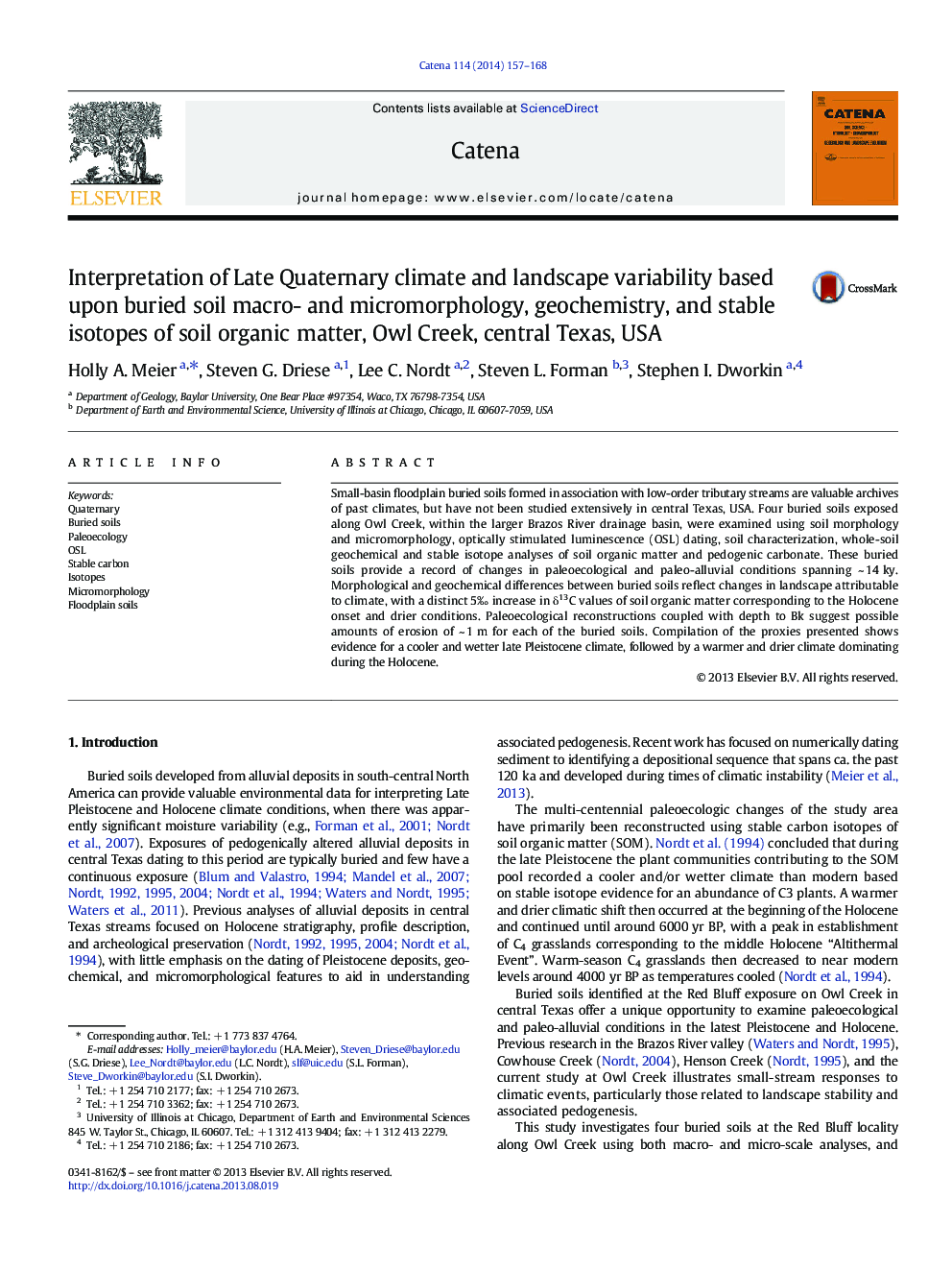| Article ID | Journal | Published Year | Pages | File Type |
|---|---|---|---|---|
| 4571501 | CATENA | 2014 | 12 Pages |
•Owl Creek has recorded late Quaternary history of alluviation and pedogenesis.•The buried soils have responded to environmental changes during the late Quaternary.•Reconstructed environments of BS 4 & 3 show a cooler/wetter late Pleistocene climate.•Paleoenvironments of BS 2 & 1 record the transition to the warmer/drier Holocene.•The Owl Creek environmental record is consistent with central Texas climate proxies.
Small-basin floodplain buried soils formed in association with low-order tributary streams are valuable archives of past climates, but have not been studied extensively in central Texas, USA. Four buried soils exposed along Owl Creek, within the larger Brazos River drainage basin, were examined using soil morphology and micromorphology, optically stimulated luminescence (OSL) dating, soil characterization, whole-soil geochemical and stable isotope analyses of soil organic matter and pedogenic carbonate. These buried soils provide a record of changes in paleoecological and paleo-alluvial conditions spanning ~ 14 ky. Morphological and geochemical differences between buried soils reflect changes in landscape attributable to climate, with a distinct 5‰ increase in δ13C values of soil organic matter corresponding to the Holocene onset and drier conditions. Paleoecological reconstructions coupled with depth to Bk suggest possible amounts of erosion of ~ 1 m for each of the buried soils. Compilation of the proxies presented shows evidence for a cooler and wetter late Pleistocene climate, followed by a warmer and drier climate dominating during the Holocene.
